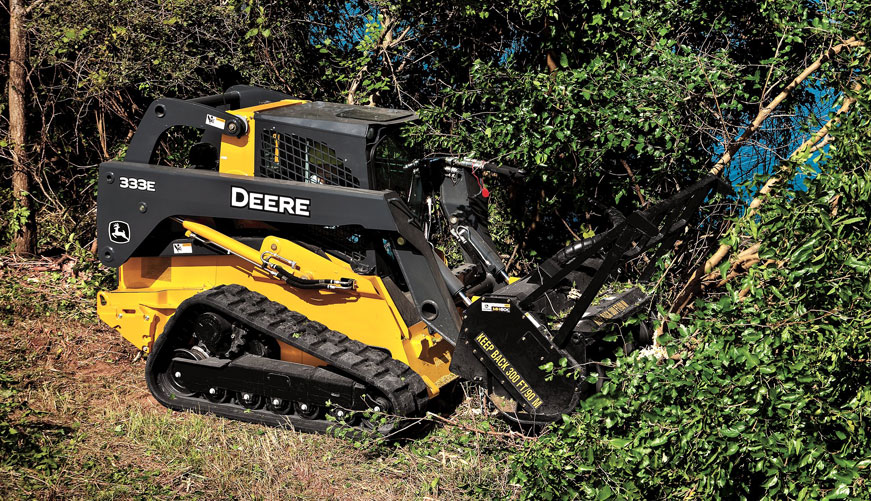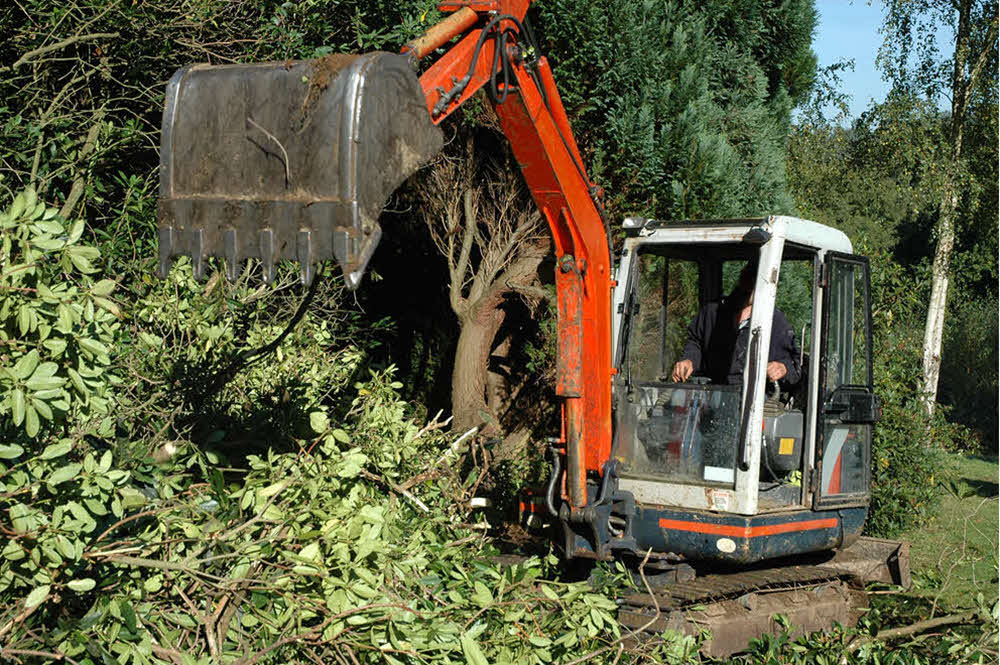Brush Clearing Servicesin Fraser MI
Rapid Brush Clearing Services to Prepare Your Property Fast
We Are Locally Owned & Operated For Over 37 Years
Contact Us Today!
We Serve Businesses In And Around The Following Cities:
About Brush Clearing Services
The Imperative of Brush Clearing in Fraser City: A Comprehensive Guide
Managing commercial properties in a bustling city like Fraser requires a sophisticated understanding of multiple land maintenance aspects, foremost of which is brush clearing. This process plays a critical role in enhancing the aesthetic charm of properties, providing safety buffers against catastrophic events like wildfires, improving soil health, and enhancing land productivity. Given its practical relevance, this guide provides a comprehensive view of brush clearing processes, benefits, and real-world applications.
The Brush Clearing Process
In Fraser, the brush clearing process begins with a detailed property inspection by experienced professionals. Teams from reputable companies such as D&J Contracting conduct in-depth site evaluations to determine the best approach for clearing brush and small trees from the property. Primary tools for this operation may include brush cutter machines, skid steers, or traditional manual tools. Occasionally, a brush clearing skid steer is utilized for larger operations, providing a robust solution that smoothly balances cost-effectiveness and efficiency.
In certain cases, where commercial properties are overrun with overgrown brush, a more intensive approach such as brush mulching service is required. This approach involves grinding the vegetation into mulch, which can be repurposed to enhance soil fertility or can be removed entirely from the site.
Economic Aspects of Brush Clearing
Consistent and systematic brush clearing services can be considered preventive maintenance for commercial properties. While it may appear as an added cost initially, neglecting this process can lead to higher expenditures in damages from pest infestations or wildfires ignited by dense vegetation. The brush clearing cost generally depends on the property size, vegetation density, and the methods employed. However, experienced clearing trees and brush companies like D&J Contracting offer competitive brush clearing prices, providing quality service that aligns with the client’s budget and property needs.
Brush Clearing Services for Commercial Properties
For commercial properties in Fraser city, professional brush clearing services significantly enhance the land’s aesthetic appeal and usability. Regular brush and land clearing is essential for maintaining the property’s overall value and can make the space more useful for parking spaces, outdoor events, or future construction projects.
Companies like D&J Contracting have a unique advantage in providing customer-focused brush cutting services in Fraser. With their local knowledge, they are attuned to Fraser city landscape’s specific challenges. They understand the need to comply with the local regulations and mitigating the environmental impacts during brush clearing tasks.
Brush Clearing & Its Role in Preventing Wildfires
One of the major advantages of timely brush clearing services is mitigation of wildfire hazards. Fraser city, like many urban environments, faces an escalating risk from wildfires. Urban wildfires have been particularly devastating, threatening commercial infrastructure, disrupting business activities, and burdening local economies.
A preventive step that commercial properties can take is employing a professional brush clearing and removal service from established contractors, such as D&J Contracting. Their professionally trained team understands the significance of creating defensible spaces through timely clearing of backyard brush or efficient land clearing brush cutter services.
In conclusion, investing in competent brush clearing services not only improves the look and utility of commercial properties in Fraser but also substantially contributes to the community’s safety and wellbeing. Ensuring regular landscape maintenance, including brush clearing, enhances Fraser’s urban aesthetic and boosts the resilience of the city’s commercial properties against environmental risks.
If you are searching for reliable brush clearing near Fraser, consider reaching out to D&J Contracting. Their experience, local knowledge, and commitment to customer satisfaction ensure that your commercial property remains safe, efficient, and visually appealing. Let them help you navigate the process of brush clearing, contributing to a safer and stronger Fraser.
Brush Clearing Services Gallery


Call Us Today to receive your Free Quote for
Brush Clearing in Fraser
Serving: Fraser, Michigan

About Fraser, Michigan
The village of Fraser was incorporated by an act of the state legislature in 1894. It was named for a lawyer from Detroit named Alexander J. Frazer. The city of Fraser was established by home rule charter November 7, 1956, and adopted by the electors on December 26, 1956.
Fraser is in southern Macomb County, six miles (10 km) southwest of Mount Clemens, the county seat, and 15 miles (24 km) northeast of downtown Detroit. The city is nearly square, bounded by 15 Mile Road, Kelly Road, 13 Mile Road, and Hayes Road. It is bordered to the north and northeast by Clinton Charter Township, to the southeast and south by Roseville, to the southwest by Warren, and to the northwest by Sterling Heights. Highway M-97 (Groesbeck Highway) passes through the southeast part of the city, connecting Mount Clemens and Detroit.
According to the U.S. Census Bureau, Fraser has a total area of 4.16 square miles (10.77 km), of which 4.14 square miles (10.72 km) are land and 0.02 square miles (0.05 km), or 0.38%, are water. Harrington Drain and its tributary, Sweeny Drain, flow northward through the city, Harrington Drain joining the Clinton River, a tributary of Lake St. Clair, in Mount Clemens.
| Census | Pop. | Note | %± |
|---|---|---|---|
| 1900 | 252 | — | |
| 1910 | 220 | −12.7% | |
| 1920 | 247 | 12.3% | |
| 1930 | 600 | 142.9% | |
| 1940 | 747 | 24.5% | |
| 1950 | 1,379 | 84.6% | |
| 1960 | 7,027 | 409.6% | |
| 1970 | 11,868 | 68.9% | |
| 1980 | 14,560 | 22.7% | |
| 1990 | 13,899 | −4.5% | |
| 2000 | 15,297 | 10.1% | |
| 2010 | 14,480 | −5.3% | |
| 2020 | 14,726 | 1.7% | |
| U.S. Decennial Census | |||
As of the census of 2010, there were 14,480 people, 6,105 households, and 3,954 families living in the city. The population density was 3,497.6 inhabitants per square mile (1,350.4/km). There were 6,448 housing units at an average density of 1,557.5 per square mile (601.4/km). The racial makeup of the city was 92.0% White, 3.9% African American, 0.5% Native American, 1.5% Asian, 0.3% from other races, and 1.8% from two or more races. Hispanic or Latino residents of any race were 2.1% of the population.
There were 6,105 households, of which 29.0% had children under the age of 18 living with them, 46.4% were married couples living together, 14.1% had a female householder with no husband present, 4.3% had a male householder with no wife present, and 35.2% were non-families. 31.4% of all households were made up of individuals, and 14.5% had someone living alone who was 65 years of age or older. The average household size was 2.36 and the average family size was 2.96.
The median age in the city was 42.9 years. 21.4% of residents were under the age of 18; 7.8% were between the ages of 18 and 24; 24.1% were from 25 to 44; 30.6% were from 45 to 64; and 16.2% were 65 years of age or older. The gender makeup of the city was 46.4% male and 53.6% female.
As of the census of 2000, there were 15,297 people, 6,062 households, and 4,122 families living in the city. The population density was 3,652.5 inhabitants per square mile (1,410.2/km). There were 6,178 housing units at an average density of 1,475.2 per square mile (569.6/km). The racial makeup of the city was 96.67% White, 0.91% African American, 0.26% Native American, 0.93% Asian, 0.01% Pacific Islander, 0.21% from other races, and 1.01% from two or more races. Hispanic or Latino residents of any race were 1.33% of the population.
There were 6,062 households, out of which 31.7% had children under the age of 18 living with them, 53.0% were married couples living together, 12.5% had a female householder with no husband present, and 32.0% were non-families. 28.2% of all households were made up of individuals, and 12.7% had someone living alone who was 65 years of age or older. The average household size was 2.49 and the average family size was 3.08.
In the city, 24.2% of the population was under the age of 18, 7.9% was from 18 to 24, 29.1% from 25 to 44, 23.4% from 45 to 64, and 15.4% was 65 years of age or older. The median age was 39 years. For every 100 females, there were 87.1 males. For every 100 females age 18 and over, there were 81.8 males.
The median income for a household in the city was $50,339, and the median income for a family was $64,119. Males had a median income of $50,243 versus $29,254 for females. The per capita income for the city was $22,864. About 3.4% of families and 4.2% of the population were below the poverty line, including 5.3% of those under age 18 and 4.4% of those age 65 or over.
Fraser Public Schools is the public school system in Fraser. The district scores above the state average on the MEAP Test.
Also located in Fraser is the Arts Academy in the Woods, a free public charter academy dedicated to students interested in pursuing fine and performing arts.
Call Us Today to receive your Free Quote for
Brush Clearing in Fraser
Related Services in Fraser, Michigan
We Serve Businesses In The Following Zip Codes:
48007, 48015, 48021, 48026, 48035, 48036, 48038, 48042, 48043, 48044, 48045, 48046, 48047, 48048, 48050, 48051, 48066, 48071, 48080, 48081, 48082, 48083, 48084, 48085, 48088, 48089, 48090, 48091, 48092, 48093, 48098, 48099, 48225, 48230, 48236, 48310, 48311, 48312, 48313, 48314, 48315, 48316, 48317, 48318, 48397